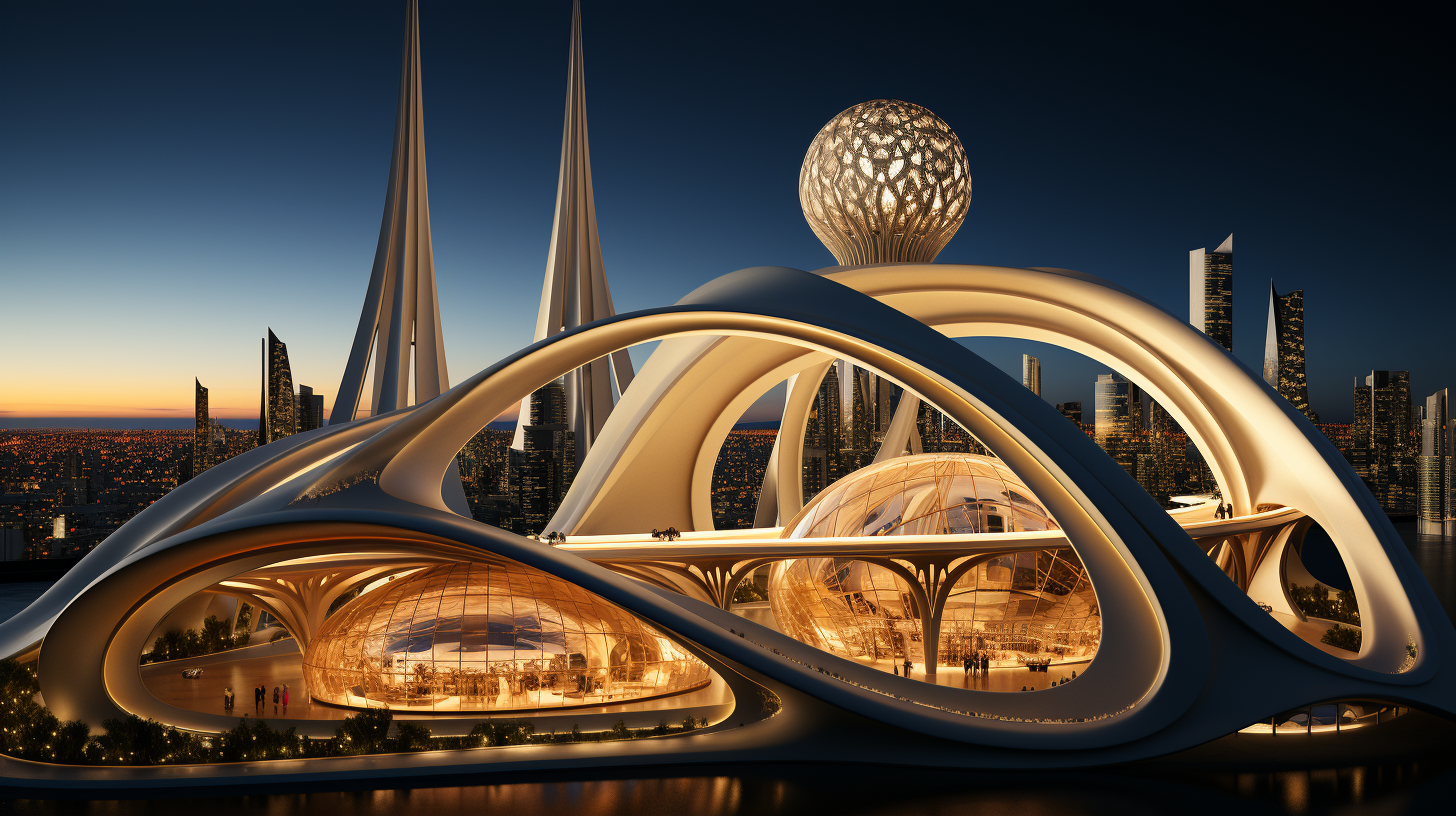
In an era marked by rapid technological advancement and environmental awareness, the architecture and construction industries emerge as pivotal catalysts for innovation and progress. These fields, traditionally centered on practicality, have evolved into realms where cutting-edge technologies, sustainable practices, and visionary designs converge. This in-depth exploration delves into the core of modern architectural trends, examines the latest advancements in construction methodologies, and highlights the imperative role of sustainability in sculpting our future urban landscapes.
Embracing Modern Architectural Trends
Contemporary architecture is a dynamic landscape, a diverse tapestry woven from various trends, each thread signifying a unique approach to space, form, and functionality.
1. Modular Construction: Redefining Efficiency and Sustainability
Modular construction has revolutionized traditional building methodologies by streamlining project timelines and boosting efficiency. This approach, involving the off-site assembly of prefabricated modules followed by on-site installation, is a game-changer in reducing construction waste and minimizing site disturbance. Pioneering projects like the B2 tower at Brooklyn's Atlantic Yards highlight how modular construction can alter urban skylines with remarkable speed and precision, setting a new precedent in the realm of high-rise development.
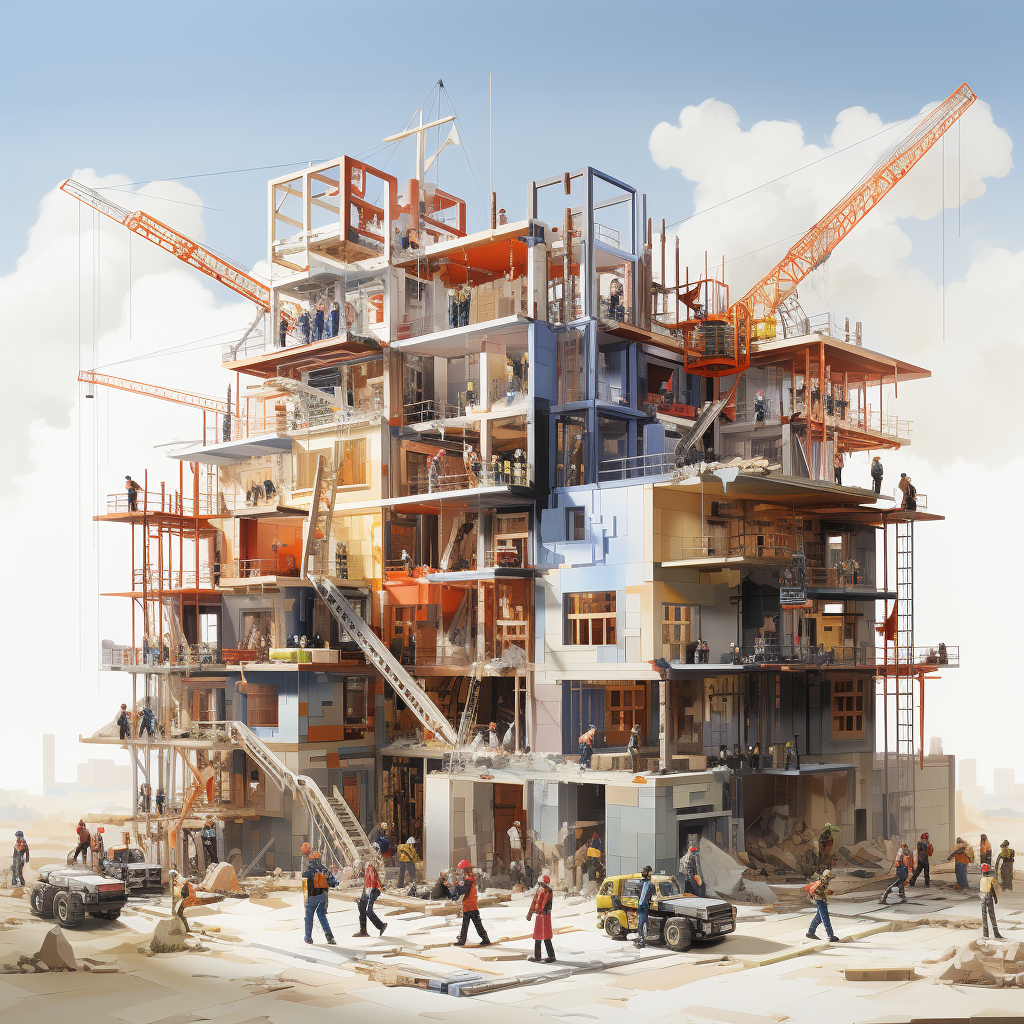 Innovation at New Heights: A vivid portrayal of the modular construction process in action, capturing the assembly of prefabricated units amidst the bustling energy of an urban construction site.
Innovation at New Heights: A vivid portrayal of the modular construction process in action, capturing the assembly of prefabricated units amidst the bustling energy of an urban construction site.
2. Adaptive Reuse: Blending Heritage with Modernity
In the pursuit of sustainability, adaptive reuse stands as a testament to resourcefulness and environmental stewardship. This practice breathes new life into old structures, repurposing them for contemporary functions while preserving their historical essence. The transformation of London's iconic Battersea Power Station into a vibrant mixed-use space exemplifies adaptive reuse's power to merge heritage with modernity, offering sustainable solutions that honor our architectural past.
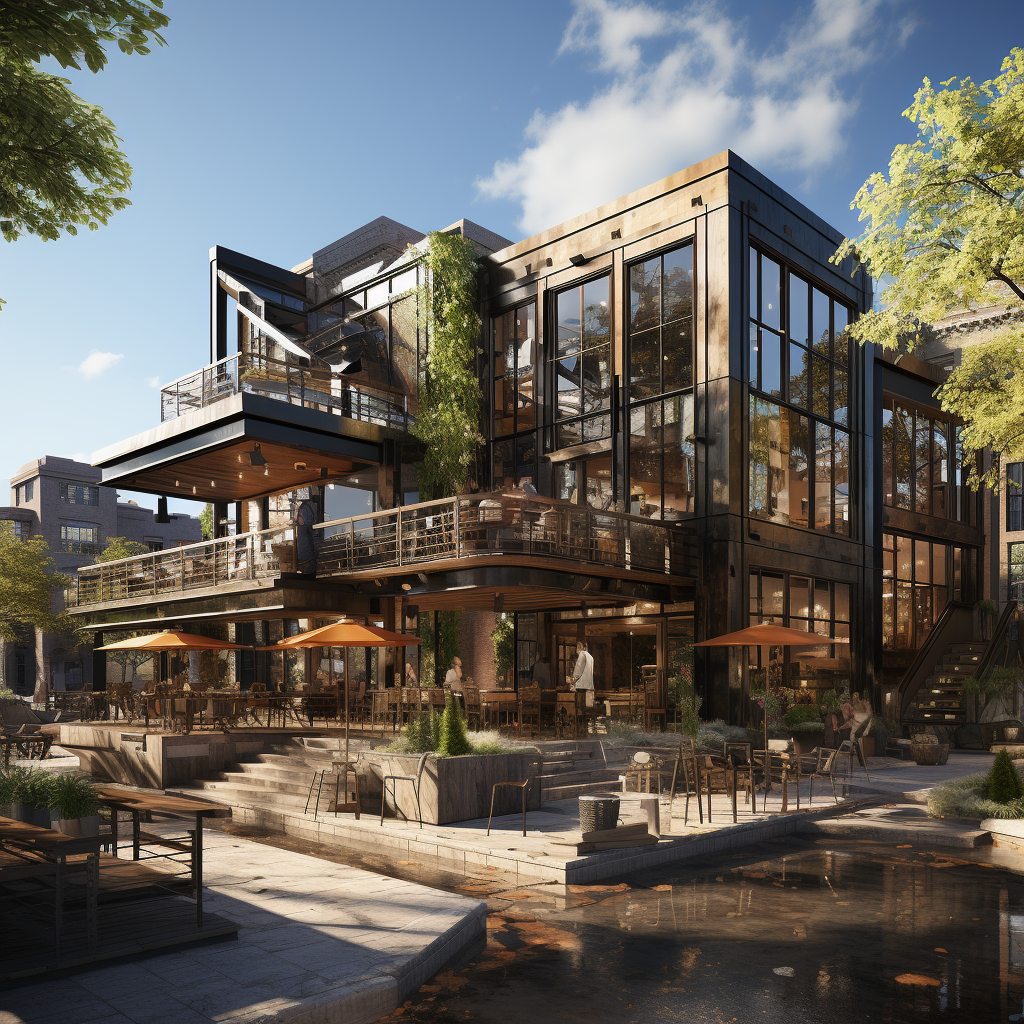 Where History Meets Modernity: An old industrial building transformed into a stunning mixed-use development, blending historical architecture with contemporary design elements.
Where History Meets Modernity: An old industrial building transformed into a stunning mixed-use development, blending historical architecture with contemporary design elements.
3. Biophilic Design: Fostering Connectivity with Nature
Biophilic design transcends traditional aesthetics, weaving nature into the fabric of urban spaces. This philosophy aims to enhance well-being, health, and environmental sustainability by fostering a deeper connection between inhabitants and natural elements. The Bosco Verticale in Milan, Italy, with its lush vertical gardens, stands as a beacon of biophilic design, demonstrating how contemporary urban developments can coexist in harmony with nature.
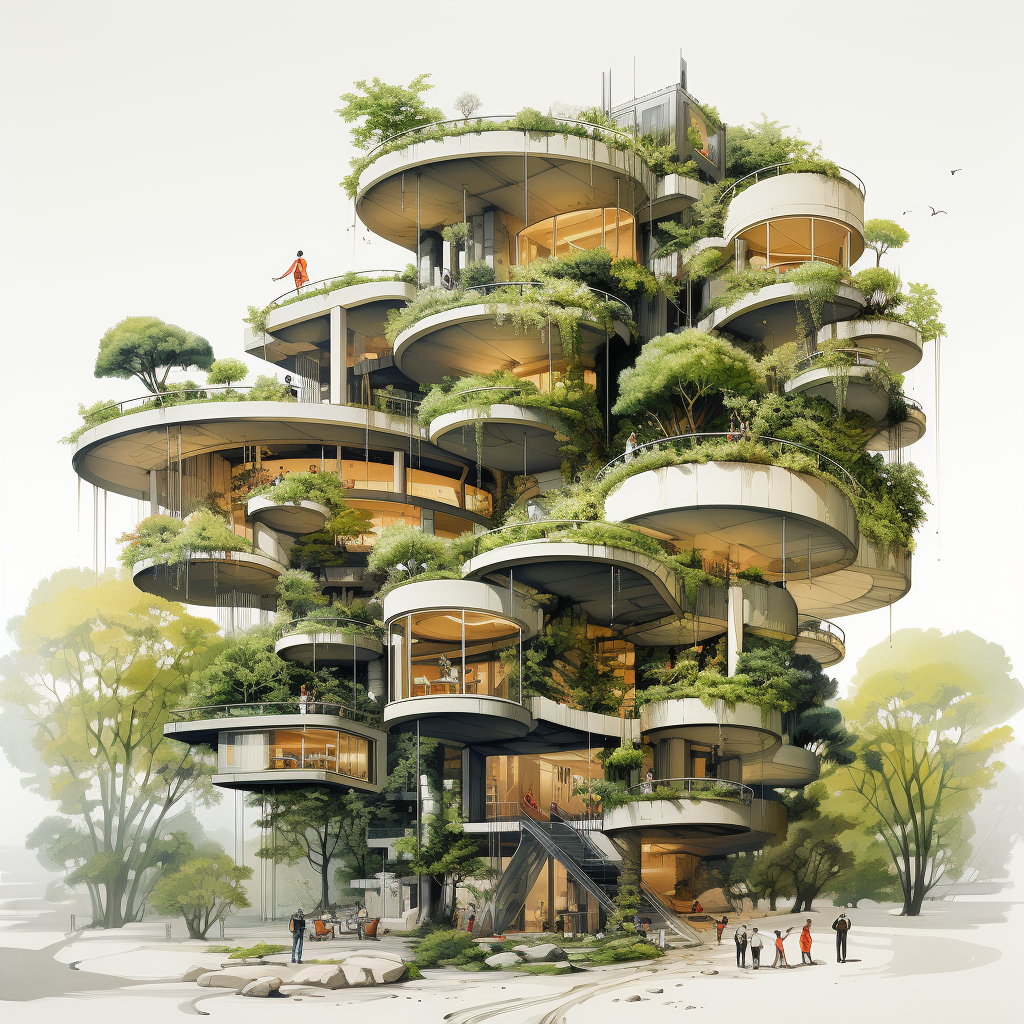 Nature and Architecture in Harmony: This modern urban building, adorned with vertical gardens and abundant natural light, epitomizes the essence of biophilic design.
Nature and Architecture in Harmony: This modern urban building, adorned with vertical gardens and abundant natural light, epitomizes the essence of biophilic design.
Advancements in Construction Methodology
The construction industry is witnessing a paradigm shift, propelled by technological breakthroughs leading to more efficient, safer, and cost-effective construction practices.
1. 3D Printing in Construction: Shaping the Future
The advent of 3D printing in construction marks a significant leap forward in building technology. From creating entire structures to intricate architectural components, 3D printing offers unparalleled precision, speed, and a drastic reduction in labor costs. The world's first 3D-printed office building in Dubai serves as a prime example, showcasing the potential of this technology to transform construction methodologies and enable more creative, sustainable building designs.
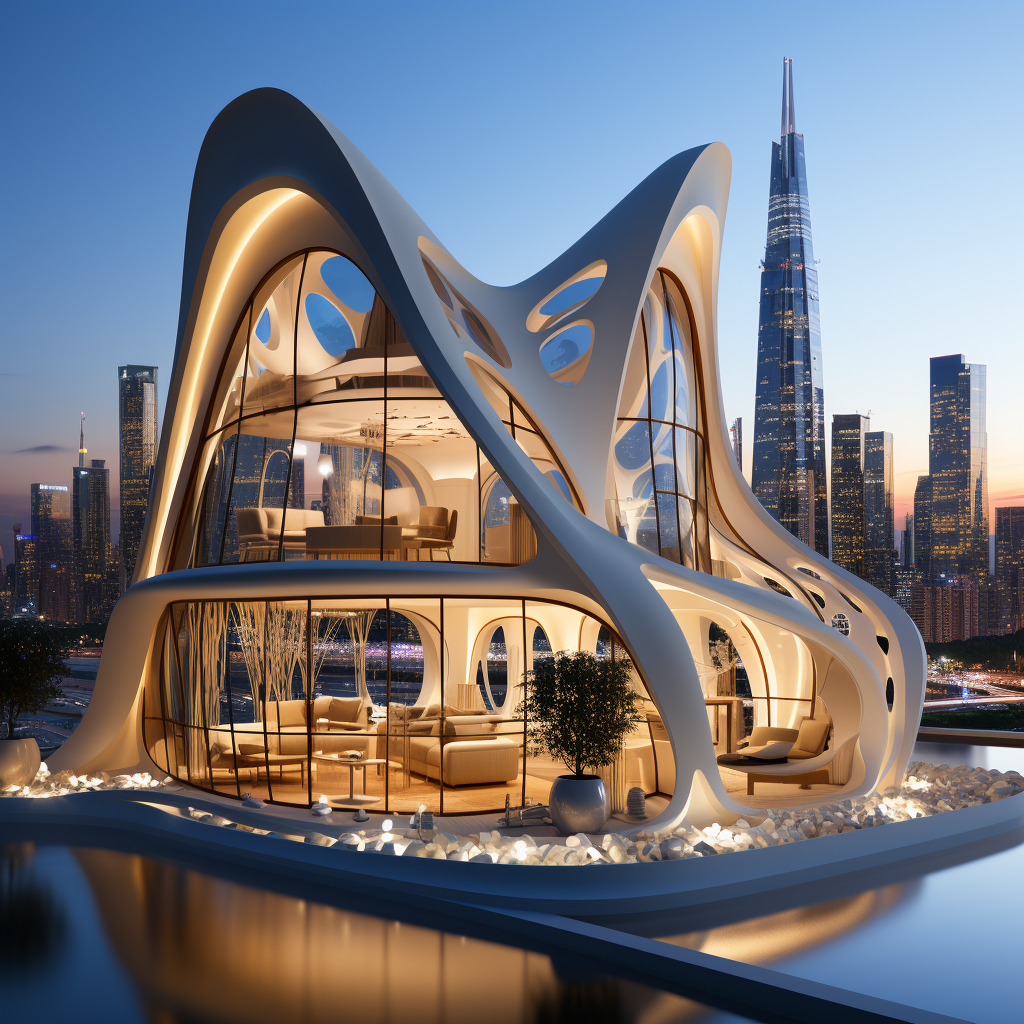 Printing the Future of Architecture: A futuristic cityscape backdrop highlights the groundbreaking process of constructing a building with 3D printing technology, showcasing unique, curvilinear architecture.
Printing the Future of Architecture: A futuristic cityscape backdrop highlights the groundbreaking process of constructing a building with 3D printing technology, showcasing unique, curvilinear architecture.
2. Smart Building Technologies: The Rise of Intelligent Spaces
The integration of Internet of Things (IoT) technologies in smart buildings is redefining the essence of modern structures. These buildings, equipped with advanced automation systems, optimize various functions such as energy efficiency, safety, and occupant comfort. 'The Edge' in Amsterdam represents the pinnacle of smart building innovations, utilizing a myriad of sensors and intelligent systems to create one of the most efficient and user-centric office spaces in the world.
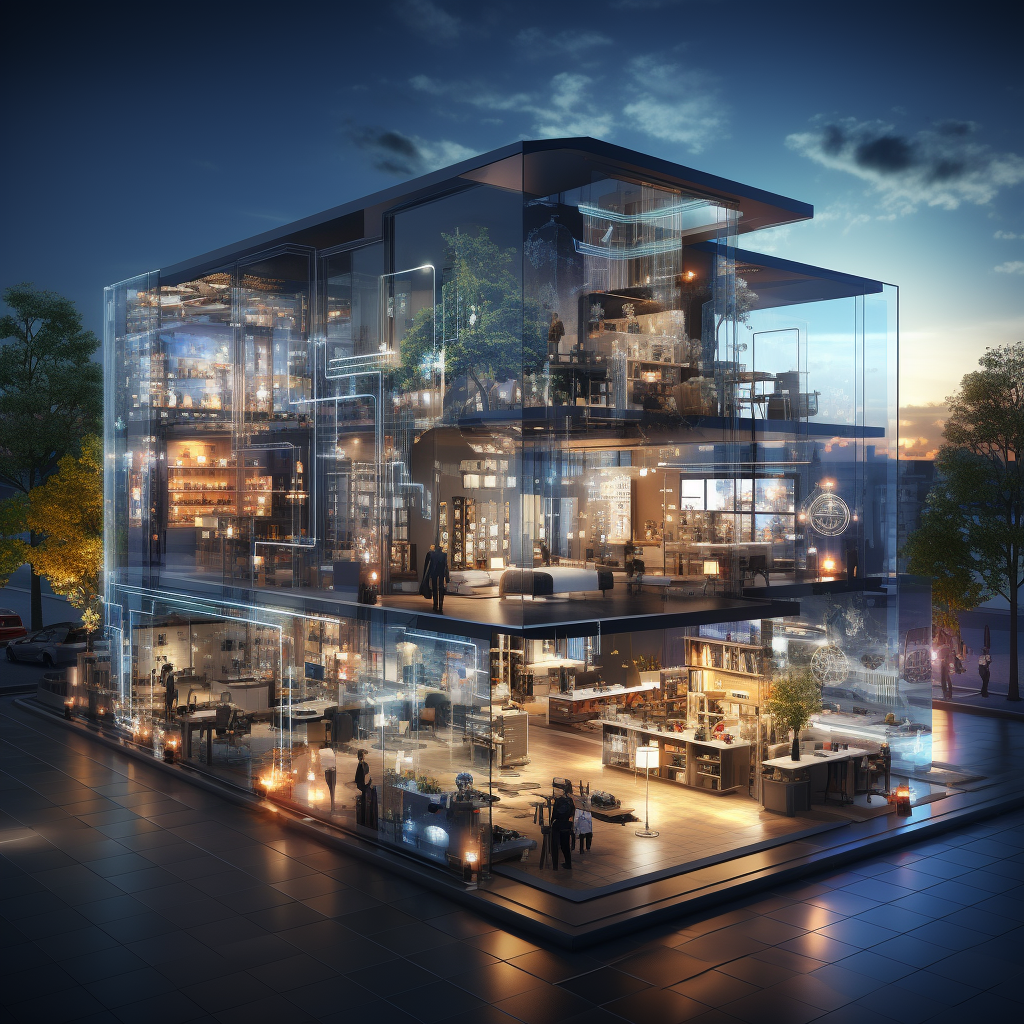 The Pinnacle of Building Intelligence: Showcasing a smart building integrated with cutting-edge automation systems, energy-efficient lighting, and a state-of-the-art control room visible through its transparent façade.
The Pinnacle of Building Intelligence: Showcasing a smart building integrated with cutting-edge automation systems, energy-efficient lighting, and a state-of-the-art control room visible through its transparent façade.
3. Green Construction Materials: Paving the Way for Eco-Friendly Development
The shift towards green construction materials underscores the industry's commitment to reducing its environmental footprint. Innovative materials like self-healing concrete and bio-bricks, derived from organic sources, exemplify sustainable building practices. These materials not only enhance the ecological performance of structures but also pave the way for more resilient and sustainable urban development.
 Eco-Friendly Construction in Progress: This image captures a sustainable construction site utilizing green materials like bio-bricks and self-healing concrete, with a focus on environmental responsibility.
Eco-Friendly Construction in Progress: This image captures a sustainable construction site utilizing green materials like bio-bricks and self-healing concrete, with a focus on environmental responsibility.
Sustainable Practices: The Backbone of Contemporary Construction
Sustainability in construction is not just a trend; it's a fundamental approach to building that prioritizes environmental health and resource efficiency.
1. Rainwater Harvesting Systems: A Key to Sustainable Water Management
Rainwater harvesting systems are becoming increasingly crucial in sustainable building design. By capturing and storing rainwater, these systems reduce dependence on municipal water supplies and mitigate urban runoff's environmental impact. The widespread implementation of rainwater harvesting in cities like Chennai, India, has proven effective in addressing water scarcity and promoting sustainable water management.
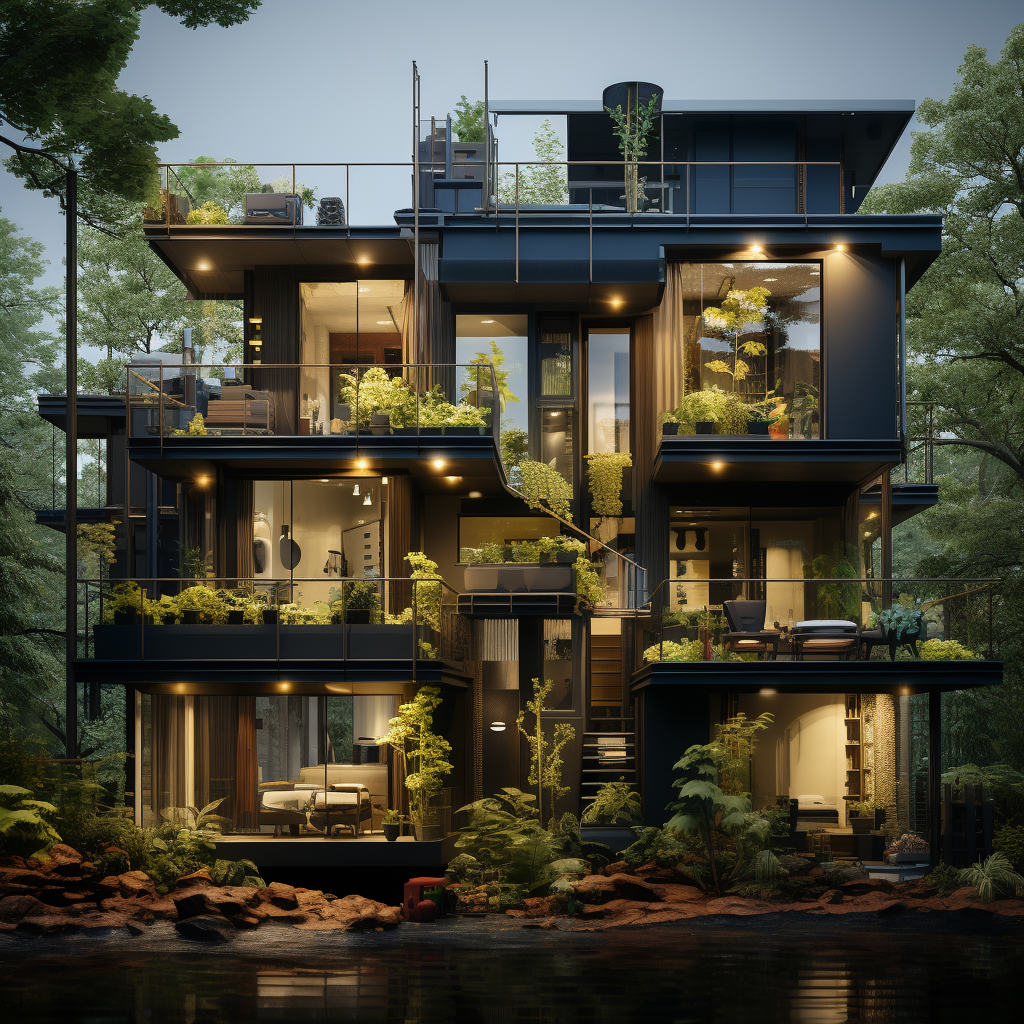 Sustainable Living, One Drop at a Time: A modern residential building equipped with an efficient rainwater harvesting system, demonstrating urban water sustainability in action.
Sustainable Living, One Drop at a Time: A modern residential building equipped with an efficient rainwater harvesting system, demonstrating urban water sustainability in action.
2. Solar Power Integration: Harnessing Renewable Energy
The integration of solar power into building designs is a growing trend in the quest for energy efficiency. Buildings like New York's Solar Carve Tower are exemplary, merging architectural innovation with energy sustainability. These structures utilize solar panels not only on rooftops but also as integral components of building facades, illustrating the potential of solar energy in modern urban design.
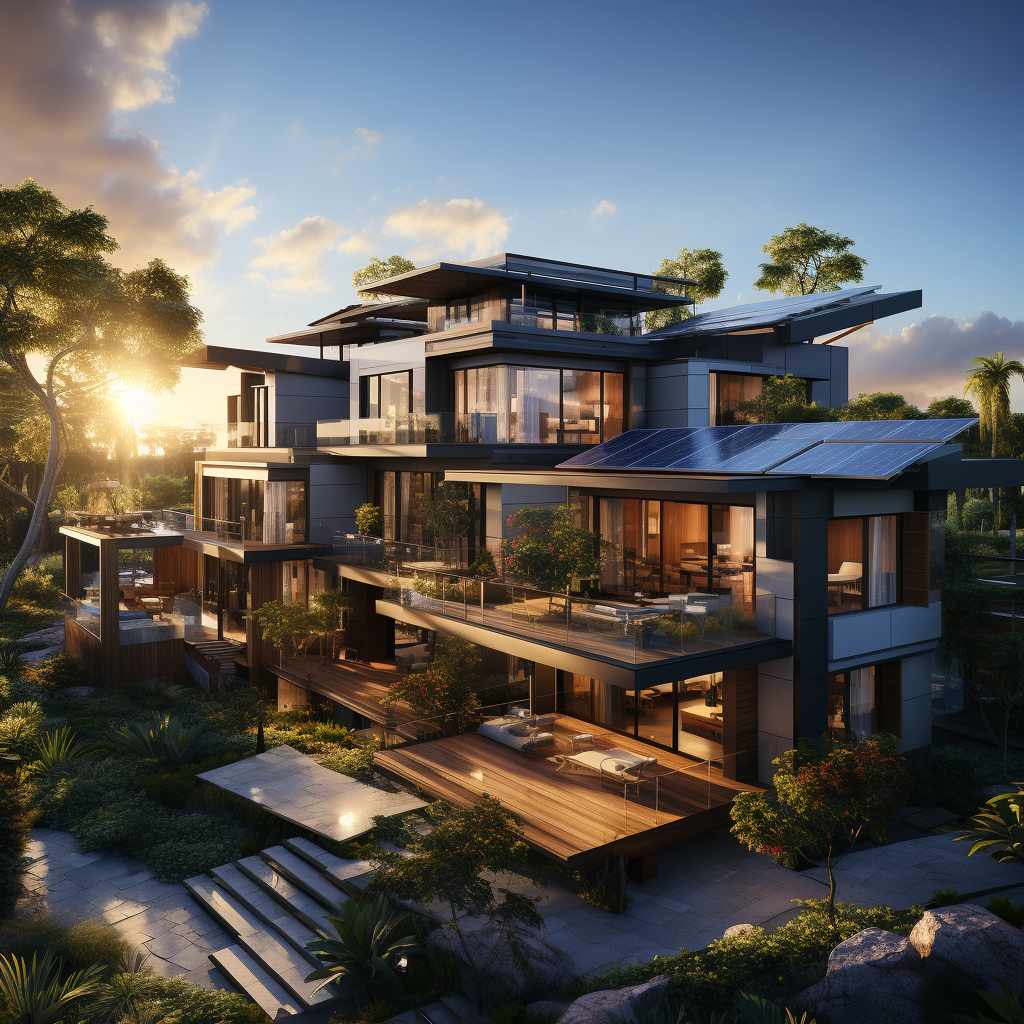 Harnessing the Sun: An innovative building seamlessly integrating solar panels into its design, both on the rooftop and façade, exemplifying solar energy's role in urban settings.
Harnessing the Sun: An innovative building seamlessly integrating solar panels into its design, both on the rooftop and façade, exemplifying solar energy's role in urban settings.
3. Green Roofing: Creating Living, Breathing Spaces
Green roofs are increasingly recognized for their multifunctional benefits. Beyond their aesthetic appeal, they provide vital insulation, reduce the urban heat island effect, and support urban biodiversity. Buildings like the ACROS Fukuoka in Japan, with its sprawling terraced green roof, demonstrate how these living spaces can serve as ecological havens in urban centers, contributing to the well-being of both residents and the environment.
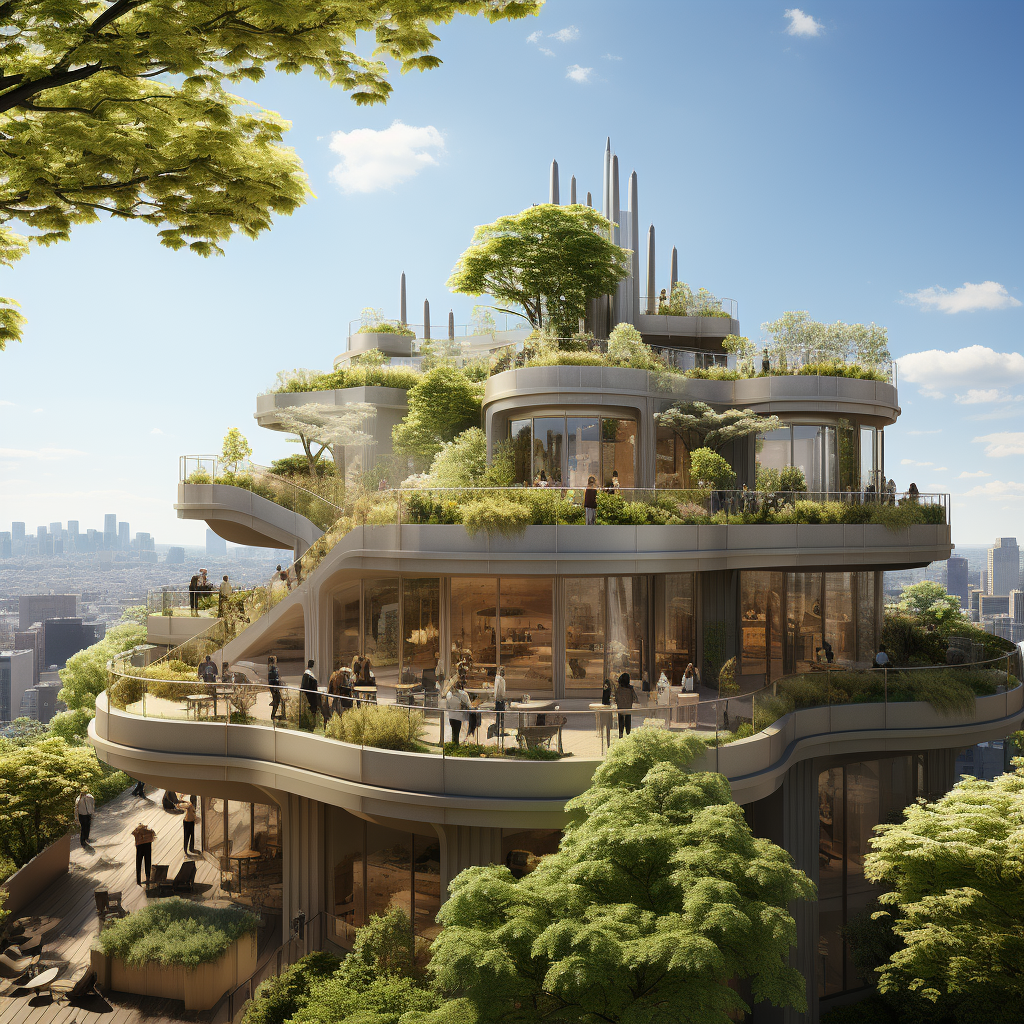 An Urban Oasis: This building's green roof, bustling with plant life and community interaction, offers a lush retreat against the city skyline, highlighting the multifunctional benefits of green spaces in urban environments.
An Urban Oasis: This building's green roof, bustling with plant life and community interaction, offers a lush retreat against the city skyline, highlighting the multifunctional benefits of green spaces in urban environments.
As we venture further into the 21st century, the architecture and construction industries continue to shape the future of our global habitat. By embracing innovative trends, leveraging technological advancements, and committing to sustainable practices, these fields are not merely responding to the demands of the present but are actively forging a path towards a more sustainable, efficient, and aesthetically enriched tomorrow.










